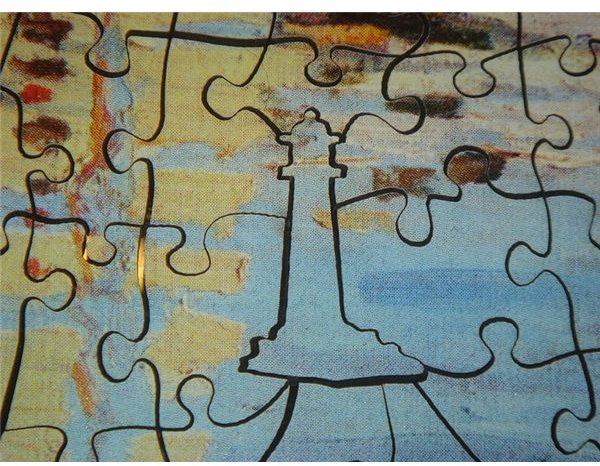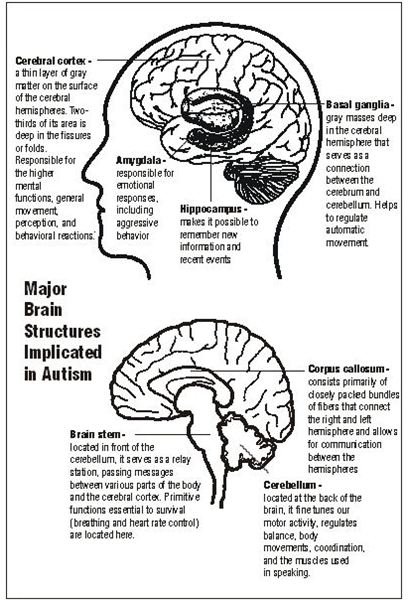What Are the Causes of Autism? Are We Closer to Knowing?
Introduction
Autism remains such a puzzling neurobiological disorder that professionals conducting research still have not verified what are the causes of autism.
In seeking to fully comprehend the contributing factors to autism, each new breakthrough provides a glimmer of hope that we are closer to knowing real answers, and perhaps eventually, either preventative measures or a cure for autism.
Several organizations work to raise money for ongoing research and provide support services for families with autistic loved ones, as well as bringing their plight to the attention of the public, and keeping autism in the forefront of the news.
Bob and Suzanne Wright, the founders of <em>Autism Speaks</em>, expressed the common theme running through the hearts and minds of families touched by autism, and the organizations committed to finding answers for those families, when they said that autism has stolen these children and their families want them back.
The Research
Since the beginning of the 21st century, aggressive ongoing research continues into discovering what are the causes of autism. The alarming increase of diagnosed cases of autism, combined with the lack of confirmed contributing factors to these incidences, does nothing to alleviate concerns. Controversial theories abound regarding causes of autism, including biological/chemical connections, genetics, and environmental factors.
Congressional Committee Report in 2001
The Committee on Government Reform met on April 25, 2001, led by committee chairman, Dan Burton. The purpose of the meeting was to explore the current research and any available evidence regarding the sharp increase in reported cases of autism. Chairman Burton evoked his belief that autism was a national and potential worldwide epidemic, with no positively identified causes, although he highly suspected a potential link between autism and mercury toxicity in the MMR vaccine.
To investigate his hypothesis, chairman Burton combined a massive collection of data presenting both pros and cons. The nearly 400 pages of resources included the following:
- parental observations and testimonies;
- reports and statistics from multiple school districts and boards of education nationwide;
- expert testimonies and statistics from representatives of numerous agencies and institutions including Center on Birth Defects and Developmental Disabilities; Committee on Immunization Safety, Institute of Medicine; Indiana University School of Medicine; McGill University; MIND Institute, University of California, Davis; National Academy of Sciences; National Institute of Child Health and Human Development; Office of Vaccine Research and Review, Food and Drug Administration; and Office of Vital Statistics and Epidemiology.
In spite of this massive body of expert testimonies and reports, no conclusive evidence proved an irrefutable link between autism and the MMR vaccine; however, the committee reached consensus that additional research was necessary. [1]
The Research (continued)
National Institute of Mental Health Reports, 2004 to 2007
Margaret Strock, a staff member in the Office of Communications at the National Institute of Mental Health (NIMH), wrote an extensive report entitled Autism Spectrum Disorders - Pervasive Developmental Disorders. Her initial report explored the current research in 2004, followed by an addendum in 2007, regarding the potential contributing factors to the prevalence of autism diagnoses. Strock’s report focused on scientific research and evidence from over thirty medical journals, publications by other professionals in the field, and expert input from other NIMH staff members.
Strock’s report presented fascinating studies in the field of brain imaging that shed new light on the belief that autism has a biologic base. The findings added validity to the neurobiological causes implicated in autism, as well as the potential of genetic factors contributing to autism.
Some of the key points presented indicated that autism affects most of the main brain structures (see illustration below - click for larger view), as well as involving many of the neurotransmitters. In addition, studies conducted primarily with twins and with families who had more than one autistic family member, indicated a strong genetic predisposition and susceptibility to autism.
Furthermore, studies conducted at both ends of various autistic individuals’ life cycles demonstrated still more indications of neurobiological causes. Brain imaging of infants revealed abnormal brain development, resulting in larger than normal heads as results of genetic defects. Postmortem brain tissue studies further aided researchers with clues into the function of genetics and the implications regarding autism. [2] [3] [4] [5]
Recent Studies, 2008 to 2010
The Environmental Illness Resource (EIR) is an online site comprised of numerous studies by researchers, doctors, and other medical professionals, as well as personal testimonies from people afflicted with illnesses that may have environmental bases. In addition to supporting some of the previously covered research, the EIR offers insight into new studies that address the potential of dietary/nutritional factors, and the impact of parental age at the time of a child’s conception as contributing to increased prevalence of autism.
Toxins
The main emphasis of reports at the EIR addresses environmental influences and their apparent connection to higher rates of autism, such as children’s exposure to chemicals, pesticides, and other toxins while in utero as well as during their early years of development.
Some researchers still believe there is a link between the mercury toxicity of the MMR vaccine and autism; however, a March 2010 court ruling announced by the American Academy of Pediatrics indicated that more recent scientific data refuted earlier claims about such a link.
Diet and Nutrition
Relatively new research conducted since 2003 (and still ongoing) indicates that autistic children have suppressed or weakened immune systems, rendering them unable to properly digest food proteins, such as the gluten found in grains, and casein primarily found in dairy products. Autistic children suffering from gastrointestinal disorders such as irritable bowel syndrome and leaky gut syndrome may benefit from a special gluten-free, casein-free (GFCF) diet.
While the GFCF diet is controversial and not fully supported by everyone in the medical profession, conversely parents, advocacy groups, and alternative health doctors promote its use to alleviate gastrointestinal problems as well as using it as a dietary intervention for autistic patients.[6] [7]
Parental Age
A key 2008 study incorporating data from the Centers for Disease Control (CDC) and the “Autism and Developmental Disabilities Monitoring Network” revealed that parental age at the time of a child’s conception could be a causative factor.
The American Journal of Epidemiology published the findings that mothers 35 and older, and fathers 40 and older, were between 30 to 40 percent more likely, respectively, to produce autistic children than were younger parents. The study also stated that older parents producing their firstborn child placed that child at greater risk for developing autism. [8] [9]
Conclusion - Looking Ahead
Although we are closer than we were a decade ago to understanding the potential causes of autism, research continues as none of these causes have proven conclusive beyond any doubt.
Certainly new technology, such as brain imaging, and advanced studies into nutrition, genetics, and other key factors will produce new insight into this puzzling disorder. Researchers plan to conduct studies with larger groups of autistic individuals, into the thousands, to produce more valid and reliable data and results.
Autism Speaks, renowned as the “world’s largest autism science and advocacy organization,” will continue with its Autism Genome Project, following the announcement in June 2010 about new autism genetic discoveries that lend credibility to earlier discoveries about genetic mutations and their influence. [10] As all these scattered pieces of the puzzle come together, perhaps the next decade will provide a bigger, more complete picture with fewer missing pieces.

Citations
[1] Congress of the U.S., Washington, D.C. House Committee on House Reform. Autism – Why the Increased Rates? A One-Year Update. Hearings before the Committee on Government Reform, One Hundred Seventh Congress, First Session. (April 25-26, 2001).
[2] Strock, Margaret. (2007-01-01). Autism Spectrum Disorders-Pervasive Developmental Disorders. National Institute of Mental Health (NIMH).
[3] Akshoomoff, N., Pierce, K., and Courchesne, E. The neurobiological basis of autism from a developmental perspective. Development and Psychopathology, 2002; 14: 613-634.
[4] Korvatska, E., Van de Water, J., Anders, T.F., and Gershwin, M.E. Genetic and immunologic considerations in autism. Neurobiology ofDisease, 2002; 9: 107-125.
[5] Courchesne, E., Carper, R., and Akshoomoff, N. Evidence of brain overgrowth in the first year of life in autism. JAMA, 2003;290(3): 337-344.
[6] Environmental Illness Resource. GFCF Diet. Retrieved from https://www.ei-resource.org/treatment-options/treatment-information/gluten-free-and-casein-free-diet
[7] Millward, C., Ferriter, M., Calver, S., and Connell-Jones, G. Gluten- and casein-free diets for autistic spectrum disorder. Cochrane Database Syst Rev. 2004;(2):CD003498.
[8] Environmental Illness Resource. Autism Spectrum Disorders. Retrieved from https://www.ei-resource.org/illness-information/environmental-illnesses/autism-spectrum-disorders/
[9] Durkin, M.S., Maenner, M.J., Newschaffer, C.J., Lee, L.C., Cunniff, C.M., Daniels, J.L., Kirby, R.S., Leavitt, L., Miller, L., Zahorodny, W., and Schieve, L.A. (2008). Advanced Parental Age and the Risk of Autism Spectrum Disorder. American Journal of Epidemiology. Oct 21, 2008.
[10] Autism Speaks. Autism Genome Project. Retrieved from https://www.autismspeaks.org/press/autism_genome_project_nature.php
Picture Credits
-
Brain structures image - released into public domain courtesy National Institute of Mental Health
-
Jigsaw image - released into the public domain by staecker
